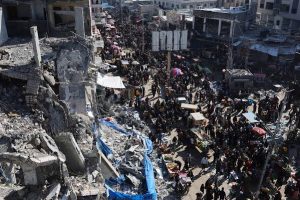Despite the monsoon being active for over a month, more than half of Chhattisgarh’s lands are yet to receive adequate rainfall. Sarguja and Bemetara districts are facing severe drought-like conditions.
According to the Meteorological Department, Chhattisgarh has received an average rainfall of 218 millimeters so far, which is 29 per cent less than the normal level.
Advertisement
Sarguja and Bemetara are the worst-affected districts, with 18 other districts also experiencing below-average rainfall, while 13 districts have recorded normal rainfall levels. These statistics cover the period from June 1 to July 11.
Meteorologists have noted that this pattern has been consistent over the past 5-6 years. In Chhattisgarh, rainfall usually starts in mid-June, then pauses for a couple of weeks, and picks up again around July 15.
Following this, scattered rainfall continues, with the potential for flooding in some areas after August 15. There is some hope on the horizon, as meteorologists predict significant rainfall on July 13 due to a developing weather system.
Meanwhile, the lack of rainfall has severely impacted paddy cultivation, which requires substantial water. Farmers with access to tube wells have mostly completed their work.
The situation is dire for farmers reliant solely on rainfall. Due to the increased support price for paddy over the last 5-6 years, a large number of farmers have opted to grow this water-intensive crop.
It is noteworthy that the increased support price for paddy over the past 5-6 years has led many farmers to cultivate this crop despite the risks associated with the monsoon.
The lack of rain is expected to have the most significant impact on paddy crops, which require a lot of water. Timely rain would have brought the transplantation work to its final stages by now.
Most farmers with tube wells for irrigation have completed their work, while those dependent on rainfall face the most challenges.
Major dams in the state also have less water compared to last year. In areas with insufficient rainfall, dam water is typically released for irrigation.
One of the major dams in Chhattisgarh, Gangrel, has only 4.91 per cent of its usable water remaining. As of July 11, the 12 major dams in the state hold 31.44 per cent of their capacity, while the 34 smaller dams hold 30.38 per cent.
Overall, the 46 dams in the state have 31.27 per cent of their total capacity filled with water, a stark contrast to the 60.75 per cent recorded at the same time last year.
















